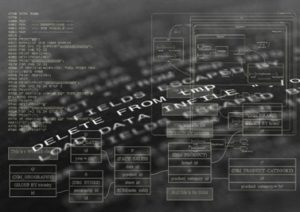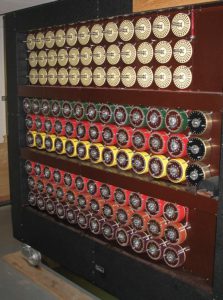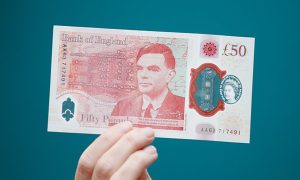Alan Mathison Turing: An Early Pioneer of Modern Computing
A figure in the world of mathematics and computer science that fascinates me a lot is Alan Turing. I studied his life and works for ICT, and our teacher explained to us how he foresaw that automation, ‘computing machinery and intelligence’ would have a huge impact on the world and the way we live in it. Making the world a better place has always driven mathematical and  scientific discovery, and Turing was a great proponent of applying math and statistics to solve real-world problems. He was one of the brilliant minds of the 20th century, and when he worked for the British government during World War II, he succeeded in breaking the secret code (Enigma code) Germany used to communicate. Since then, he contributed to the field of cryptography and laid the foundations for major advances in computing. At the end of the war, Turing was made an Officer of the Most Excellent Order of the British Empire (OBE) by King George VI.
scientific discovery, and Turing was a great proponent of applying math and statistics to solve real-world problems. He was one of the brilliant minds of the 20th century, and when he worked for the British government during World War II, he succeeded in breaking the secret code (Enigma code) Germany used to communicate. Since then, he contributed to the field of cryptography and laid the foundations for major advances in computing. At the end of the war, Turing was made an Officer of the Most Excellent Order of the British Empire (OBE) by King George VI.
He also experimented with a universal computing machine (later called a Turing machine) that would be able to decode and perform any set of instructions. The Turing machine became the basis for all digital computers. He spent a lot of his time theorizing about the concept of intelligence and how it applied to both humans and machines, but even he knew his own intellectual limitations in developing computer algorithms and the limits of what computers can do.
algorithms and the limits of what computers can do.
Turing also became famous for his major contributions to the field of artificial intelligence. The Turing Test, for example, was a method of inquiry that measured a machine’s ability to exhibit intelligent behavior indistinguishable from a human’s. In this way, he explored the mathematical possibility of artificial intelligence. According to him, humans used available information as well as reason in order to solve problems and make decisions; why couldn’t machines do the same thing? This was the logical framework of his 1950 paper, “Computing Machinery and Intelligence,” in which he discussed how to build intelligent machines and how to test their intelligence. Turing not only described the use of Computational Logic but also the necessity for the development of Machine Learning in order to achieve human-level AI within a 50-year time frame. He also wrote a paper called “The Imitation Game,” which coined the idea of AI (I suggest seeing the film inspired by this paper). That’s why he is also called the Father of AI. With the recent rise of generative AI, which produces text, images, and video on command, and if we only think of programs like ChatGPT, Bard, Claude AI, etc. that can convincingly come off as humans in a dialogue, I think Alan Turing must be mentioned.
Thanks to Turing’s contributions, the landscape of computer science was shaped. Alan Turing’s legacy remains a testament to the limitless potential of human  intellect, inspiring generations to come. Unfortunately, tragic moments never fail. In 1952, he was arrested and charged with “indecency” after a brief relationship with another man. The punishment for homosexuality was chemical castration, a series of hormone injections that left Turing impotent. It also caused gynecomastia, giving him breasts. But Turing refused to let the treatment take him away from his work, keeping up his lively spirit. On 7 June 1954, aged 41, he committed suicide by cyanide poisoning. A curiosity about Alan: His face is shown on the new £50 note.
intellect, inspiring generations to come. Unfortunately, tragic moments never fail. In 1952, he was arrested and charged with “indecency” after a brief relationship with another man. The punishment for homosexuality was chemical castration, a series of hormone injections that left Turing impotent. It also caused gynecomastia, giving him breasts. But Turing refused to let the treatment take him away from his work, keeping up his lively spirit. On 7 June 1954, aged 41, he committed suicide by cyanide poisoning. A curiosity about Alan: His face is shown on the new £50 note.

Lascia un commento